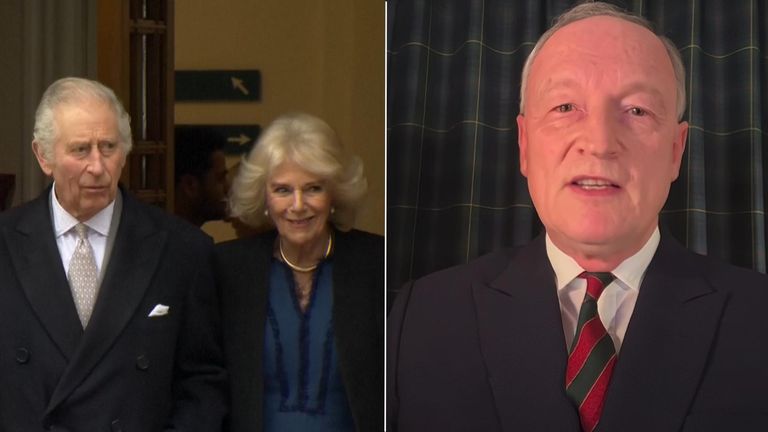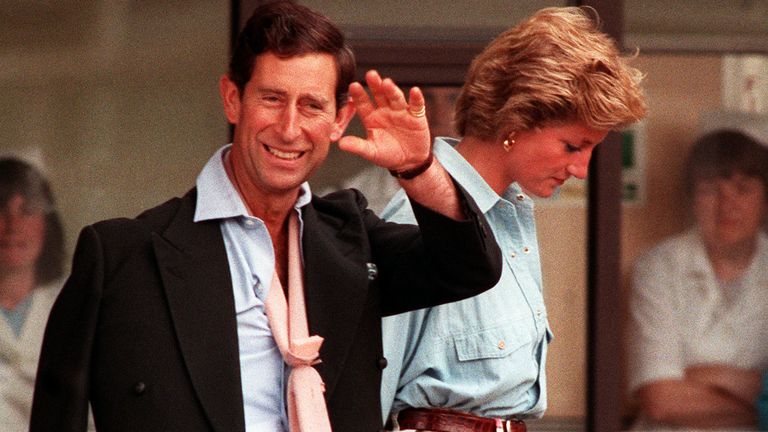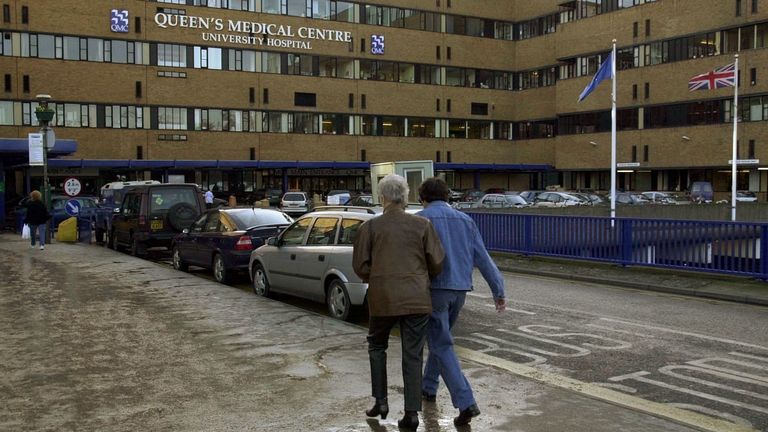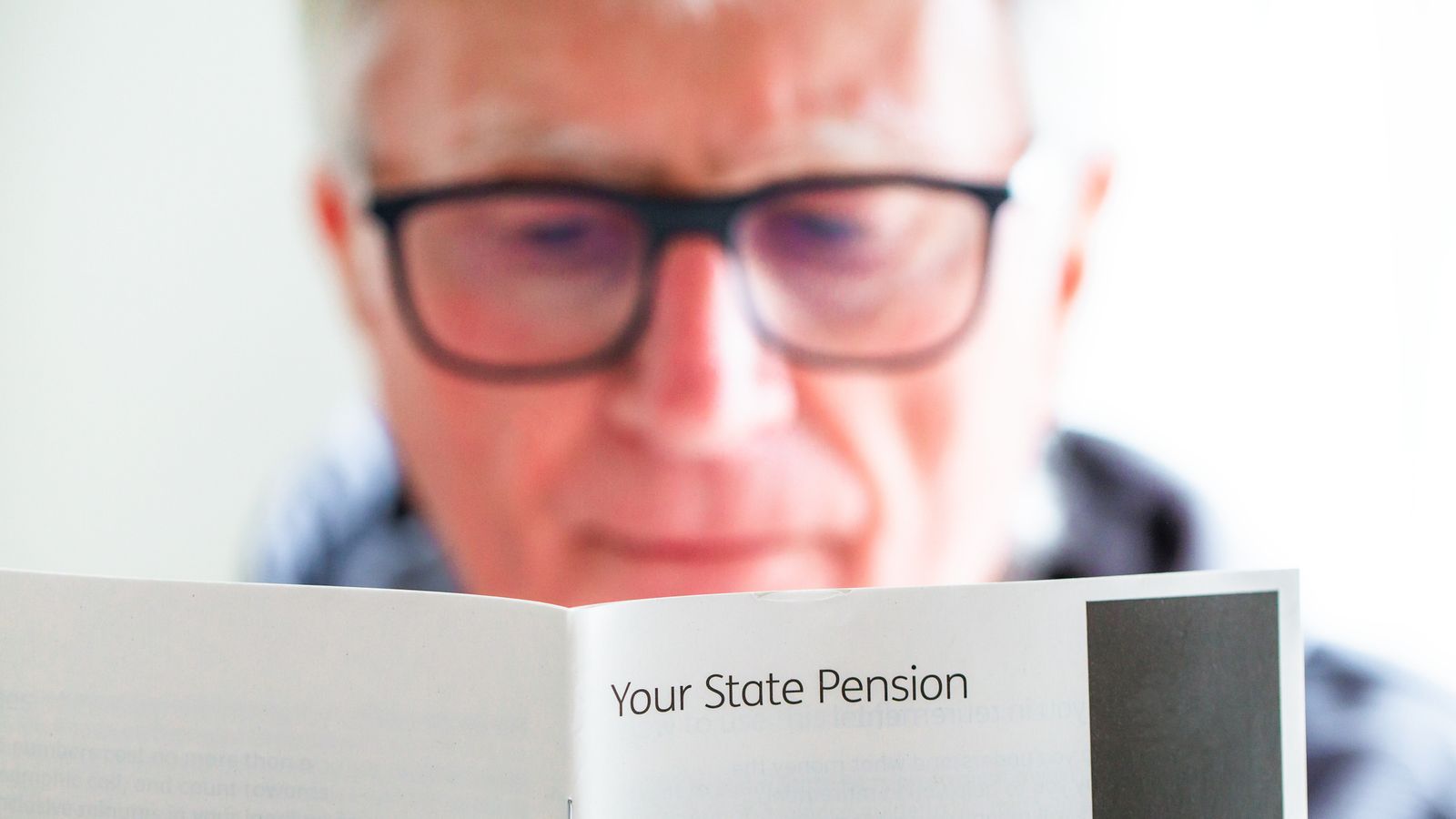
The King has begun treatment for a cancer diagnosed following his treatment for an enlarged prostate.
He will now undergo a schedule of regular treatments, during which he has been advised by doctors to postpone public-facing duties.
Buckingham Palace has not confirmed what type of cancer the King has.
Follow live: King chose to share diagnosis to ‘prevent speculation’
Here are some of the previous health issues the King has faced.
Enlarged prostate
The King’s health has been in the spotlight already this year.
On 17 January, he was diagnosed with a benign condition while staying at Birkhall in Aberdeenshire, after going for a check-up because he was experiencing symptoms.
He underwent surgery for the enlarged prostate, and it is understood he wanted to share the news to encourage other men to get themselves checked.
The NHS reported huge boosts in people asking to find out more about the condition affecting the King.
The King, who only acceded to the throne 16 months ago, cancelled engagements and was urged to rest by his doctors ahead of the corrective procedure.
Read more:
Harry to travel to UK to see King ‘in coming days’
Full statement as palace reveals monarch having treatment
One in every three men over the age of 50 will have symptoms of an enlarged prostate, which include needing to visit the toilet more frequently, with more urgency, and difficulty emptying the bladder.
An enlarged prostate, known as benign prostatic hyperplasia, does not usually pose a serious threat to health, and it is not cancer.
Early polo injuries
In one of his earlier polo-related injuries, he was thrown and kicked by his pony and needed six stitches in 1980.
He suffered a two-inch crescent scar on his left cheek after that incident.
He was also hit in the throat on another occasion, causing him to lose his voice for 10 days.
The monarch resisted pressure to give up polo after he collapsed in 1980 at the end of a game in Florida and had to be put on a saline drip.
Avalanche near-miss
In 1988, while skiing off-piste at Klosters on one of Europe’s most dangerous runs, he narrowly escaped an avalanche that killed his good friend Major Hugh Lindsay, who was a former equerry to Queen Elizabeth II.
He jumped to a ledge and helped save the life of another friend, Patti Palmer-Tomkinson, by digging her out of snow and keeping her conscious until a helicopter arrived.
He would later say he had never seen anything so terrifying.
Knee surgery
In March 1998, the King – then Prince Charles – had laser keyhole surgery on his right knee.
That came six years after an operation to repair torn cartilage in his left knee after a polo injury.
The outdoor and active Prince of Wales also suffered from back pain at the time, which had been aggravated over years of playing polo.
He never travelled on royal tours without a special cushion, usually a tartan one, which he used to ease back pain.
Broken rib
In the same year, he broke a rib when he fell from his horse in a hunting accident.
Double arm break
The King has over the years had some form for falling from his horse in a polo game.
In June 1990 he broke his arm in two places and spent three nights in Cirencester Memorial Hospital in Gloucestershire after an accident in a competitive game of polo.
When he left hospital, he was reported to have told journalists outside “you can all go home at last”, as he got into his car.
He needed another operation three months later after one of the fractures didn’t properly heal.
It is understood bone was taken from his hip to help with healing the break, while a metal plate was also fitted with screws.
Shoulder fracture
In January 2001, he fractured a bone in his shoulder after falling off his horse during a fox hunt in Derbyshire.
He had to wear a sling for several days while the fracture healed.
Knocked unconscious
Just a few months later, in August, he was taken to hospital as a precautionary measure for what was described as a minor injury.
But he had been knocked unconscious when his horse threw him during a polo match, leading to him being stretchered off and taken by ambulance.
It is reported he fell halfway through the second half of a charity polo match in Cirencester in Gloucestershire.
Hernia operation
Two years later, in March 2003, the King had a routine operation for a hernia, and reportedly joked afterwards “hernia today, gone tomorrow”.
It’s not clear how he picked up the injury, which is a common operation.
Growth removed
In 2008, he had a non-cancerous growth removed from the bridge of his nose in a routine procedure.
Catching COVID
In March 2020, the monarch, then 71, caught COVID before vaccinations were available.
His symptoms were mild and he isolated at Birkhall.
He lost his sense of taste and smell for a time, and later described it as “strange, frustrating and often distressing” being without friends and relatives over lockdown.
He was infected for a second time in February 2022, but at that point he was triple-vaccinated.
Appendix operation
In one of his earliest known admissions to hospital, the young prince was rushed to Great Ormond Street Hospital for an appendix operation as a 13-year-old in February 1962.
He declared on a later visit: “I got here just in time before the thing exploded and was happily operated on and looked after by the nurses.”
Big fingers
Concern has been expressed over the years at his big fingers amid fears they might be due to fluid build-up or other conditions.
While any details around the cause – if any exist – have not been made public, the King has been aware of his puffy fingers for decades.
“He really does look surprisingly appetising and has sausage fingers just like mine,” he wrote in 1982 to a friend after the birth of his first son, William.
















